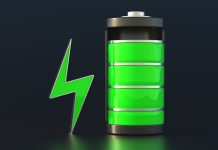
Lithium is one of the most important materials in modern technology.
It powers rechargeable batteries for phones, laptops, electric cars, and large-scale energy storage.
But lithium supplies are limited, difficult to mine, and vulnerable to global supply chain disruptions.
A new study from the University of Illinois Urbana-Champaign offers promising news: lithium can be efficiently recovered from old batteries using a new electrochemical method that is both affordable and more environmentally friendly.
The research, led by chemical and biomolecular engineering professor Xiao Su, introduces a recovery process that works on several common types of lithium batteries.
The technique uses a combination of organic solvents and polymer-coated electrodes to selectively capture lithium from battery waste.
The results show that lithium can be extracted at a cost that could compete with, or even beat, current mining and production methods.
Recycling lithium from old batteries is challenging because battery waste contains many different metals.
When used batteries are dismantled, the metals are usually dissolved in a liquid—called a leachate—that contains lithium mixed with other materials. Su explains that traditional recovery methods struggle because the other metals interfere with lithium extraction.
To solve this problem, his team developed a special copolymer that can selectively bind to lithium while ignoring the other metals in the solvent.
In the lab, the researchers first break down used batteries and dissolve the metals into an organic solvent. This solution is then placed into an electrochemical cell containing an electrode coated with the custom-designed copolymer.
The electrode acts like a sponge, capturing lithium ions and leaving the unwanted metals behind. When the electrode becomes filled with lithium, it is moved into a fresh solution. A small electric voltage is applied, causing the polymer to release the lithium ions, which can then be collected in purified form.
This process can be repeated many times, making it a sustainable and efficient way to recover lithium from waste.
The findings were published in ACS Energy Letters, with contributions from former graduate student Nayeong Kim, postdoctoral researchers Johannes Elbert and Hee-Eun Kim, and undergraduate student Chengxian Wu.
Su’s team also performed an economic analysis to see how the method compares with current lithium production costs. Their three-stage recovery approach showed strong financial promise, making the technique potentially cheaper—or at least competitive—with mining.
While larger-scale testing and further modeling are still needed, the study highlights a major opportunity.
By turning old batteries into a reliable lithium source, this technology could support a more circular and sustainable supply chain, reduce environmental damage from mining, and strengthen future access to this vital resource.



